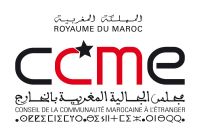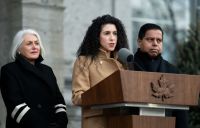Since applying for a green card in 2004, India native Vivek Goel earned a second master’s degree, launched a career in software development and conceived a vision for his own consulting business. He is still waiting for the green card.
Waits for work-based permanent residence could become easier — if not any shorter — under recent Obama administration changes overshadowed by more controversial steps for immigrants without legal status.
But employers in Minnesota and elsewhere say the changes don’t do enough to meet their demand for more work visas and green cards for college-educated professionals such as Goel.
“We’re training many of these people, some of them with taxpayer dollars,” said Mark Schneider, associate director for employment-based visas at the University of Minnesota. “Why would we send them home afterward?”
Talent shortages, particularly in the high-tech industry, have been the focus of intense debate and dueling research findings for years. Administration critics have pounced on Obama’s changes to accuse him of kowtowing to business interests.
In Minnesota, evidence of skilled-worker shortages is inconclusive. But many agree that in the next decade, immigration may be one solution for a wave of baby-boomer retirements amid flat population growth.
In 2004, Goel received an attractive offer: A tech company wanted to hire him before he even finished his master’s in computer science from North Dakota State University. The company would line up a temporary work visa and sponsor him for a green card, the document that grants permanent residence and puts immigrants on the path to citizenship.
Since the mid-2000s, many employment-based green-card applicants and their spouses have faced long backlogs for the 140,000 such documents available each year. Because of per-country quotas, the waits are especially long for Indian and Chinese natives. They can stretch to a decade or more if the applicant only has a bachelor’s degree.
What makes the backlogs especially frustrating are restrictions that mean switching jobs and even accepting promotions can torpedo the application. Despite his friends’ warnings, Goel has accepted several promotions.
“If I passed on these opportunities, I would be stuck in the same place for 12 years,” Goel said.
Changes under Obama’s November executive action on immigration will make it much easier for green-card applicants to switch employers and give their spouses permission to work.
Sandra Feist, vice chair of the local American Immigration Lawyers Association chapter, says the changes are “huge for employment flexibility and huge for families.”
Debjyoti Dwivedy, a Twin Cities data-storage engineer and vice president of the national advocacy group Immigration Voice, agrees these changes are a big deal. His group has argued that restricted mobility for people awaiting green cards makes it easy for employers to take advantage of them — and shortchange American workers.
“We want companies to hire immigrants for the right reasons, not because they can be exploited,” he said. “This will bring a more fair and free market.”
Other changes will make it easier for multinational companies to bring in employees from branches overseas and for foreign inventors and entrepreneurs to live in the country temporarily.
Businesses: Not enough
For companies that have lobbied for more work visas and green cards, though, Obama’s changes were underwhelming. The administration has said only Congress can increase those quotas.
Some of Obama’s measures would be helpful, said Sarah Radosevich of the Minnesota Chamber of Commerce. For instance, the administration is looking to extend “optional practical training,” which allows recent graduates to stay and work in their fields on their student visas. Companies often end up lining up work visas for them. But last year, less than half of applicants scored a visa in an annual lottery to dole out the 85,000 visas, known as H-1Bs. Longer practical training could mean an extra shot at the lottery.
But, Radosevich says, “It doesn’t provide any actual certainty for the individual or the employer.”
Radosevich says members’ perennial concerns about qualified worker shortages have gotten “louder and more urgent.” Large employers such as Cargill, seeking workers with specialized technical and foreign language skills, sometimes recruit straight off campuses.
In 2013, about 5,500 H-1Bs went to workers based in Minnesota, up more than 40 percent from five years earlier.
A visa uptick
In recent years, Minnesota has seen an increase in visas for college students and skilled workers. The University of Minnesota and other institutions have ramped up international student recruiting. Meanwhile, hiring has picked up as companies bounce back from the recession.
At the University of Minnesota, Schneider says the changes stand to help international students, who now account for almost 30 percent of advanced degrees in sought-after fields of science, technology, engineering and math.
More international students at the U
The number of foreign students at the University of Minnesot ahas gone up amid increased recruiting efforts and an influx of students from China. International students make up a significant portion of advanced degree graduates in the sought after fields of science, technology, engineering and math.
But the long green-card waits are still a problem for some 400 faculty and researchers on H-1B visas, and the U has lost some to institutions in other countries.
Xuan Li, a native of China who teaches statistics on the U’s Duluth campus, says he has no interest in switching jobs. But as long as he is in the green-card backlog, he cannot apply for federal research grants, a major setback for a tenure-track faculty member.
The university and other employers are cheering on a bipartisan congressional proposal co-sponsored by Minnesota U.S. Sen. Amy Klobuchar, which would make more H-1Bs and green cards available.
Labor unions such as the AFL-CIO have warned against raising work visa caps without protections for both foreign and American workers. Steve Hunter, the union’s secretary-treasurer in Minnesota, welcomes changes that give immigrant workers more flexibility: “If a worker is tied up to an employer, it opens the door to all kinds of shenanigans.”
Doubtful data
Two years ago, the Minnesota Department of Employment and Economic Development analyzed data and surveyed employers in four fields with persistent reports of worker shortages. It found manufacturers struggle to fill jobs that don’t require a college degree, but not in engineering, nursing and information technology, said the department’s Oriane Casale.
But that’s bound to change amid demographic changes and resurgent state economy, Casale said; professionals in science and fields will likely be in higher demand.
To Mark Krikorian of the Center for Immigration Studies, which supports reducing legal and illegal immigration, the president is pushing the limits of his authority to accommodate deep-pocketed supporters in the high-tech industry: “All these actions fall into the rubric of importing ever more foreign workers without a vote by Congress.”
He sees longer optional practical training as “just a way of providing companies cheap labor.” But he says he is more concerned about what might come out of other initiatives. For instance, will advocates get their way in exempting dependents from the work-based green-card cap, which would more than double the green cards available?
Supporters of the president’s actions also note that many initiatives lack firm timelines and key details. And advocates say Congress still needs to address immigration issues. Says Radosevich, “Executive action doesn’t comprehensively solve any of these issues.”
Star Tribune









